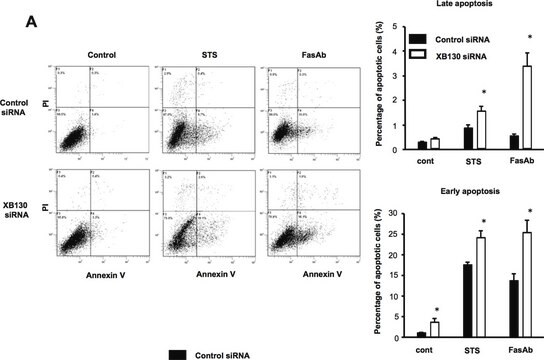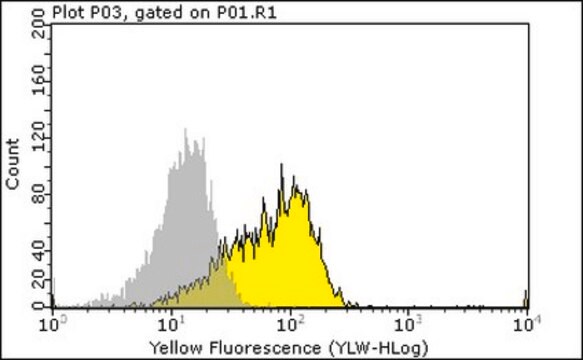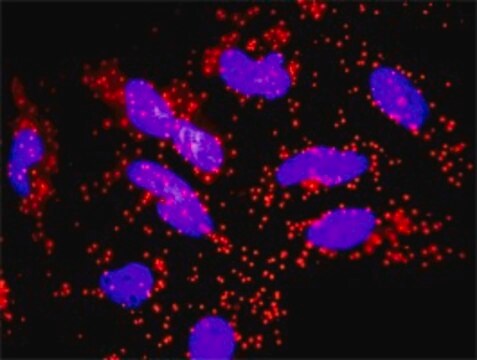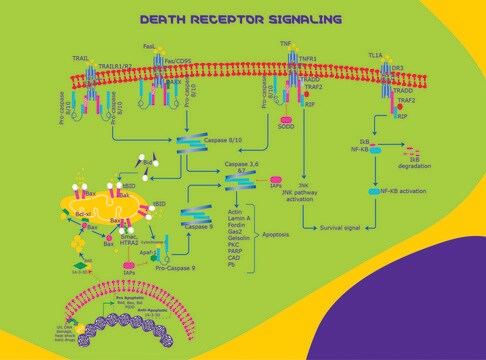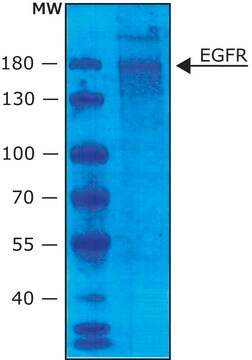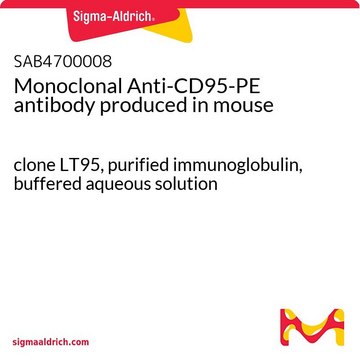F4424
Anti-Fas Antibody
mouse monoclonal, DX2
Sinonimo/i:
Monoclonal Anti-Fas (CD95/Apo-1) antibody produced in mouse, Anti-Apo-1, Anti-CD95
About This Item
Prodotti consigliati
Nome del prodotto
Monoclonal Anti-Fas, clone DX2, purified from hybridoma cell culture
Origine biologica
mouse
Coniugato
unconjugated
Forma dell’anticorpo
purified from hybridoma cell culture
Tipo di anticorpo
primary antibodies
Clone
DX2, monoclonal
Descrizione
fluorescence intensity and maximum percentage positive similar to that obtained with saturating antibody levels
Stato
buffered aqueous solution
impiego
10 μL sufficient for 1 × 106 cells
Reattività contro le specie
human
tecniche
flow cytometry: 4-20 μg/mL using cultured human Burkitt’s lymphoma Raji cells
microarray: suitable
Isotipo
IgG1
N° accesso UniProt
Condizioni di spedizione
dry ice
Temperatura di conservazione
−20°C
modifica post-traduzionali bersaglio
unmodified
Informazioni sul gene
human ... FAS(355)
Descrizione generale
Specificità
Immunogeno
Applicazioni
Western Blotting (1 paper)
- immunoblotting
- flow cytometry
- the induction of apoptosis
Azioni biochim/fisiol
Stato fisico
Esclusione di responsabilità
Non trovi il prodotto giusto?
Prova il nostro Motore di ricerca dei prodotti.
Codice della classe di stoccaggio
10 - Combustible liquids
Classe di pericolosità dell'acqua (WGK)
WGK 3
Punto d’infiammabilità (°F)
Not applicable
Punto d’infiammabilità (°C)
Not applicable
Dispositivi di protezione individuale
Eyeshields, Gloves, multi-purpose combination respirator cartridge (US)
Scegli una delle versioni più recenti:
Certificati d'analisi (COA)
Non trovi la versione di tuo interesse?
Se hai bisogno di una versione specifica, puoi cercare il certificato tramite il numero di lotto.
Possiedi già questo prodotto?
I documenti relativi ai prodotti acquistati recentemente sono disponibili nell’Archivio dei documenti.
Articoli
Quantitative and qualitative western blotting to validate knockdown by esiRNA. Sigma-Aldrich.com
Il team dei nostri ricercatori vanta grande esperienza in tutte le aree della ricerca quali Life Science, scienza dei materiali, sintesi chimica, cromatografia, discipline analitiche, ecc..
Contatta l'Assistenza Tecnica.